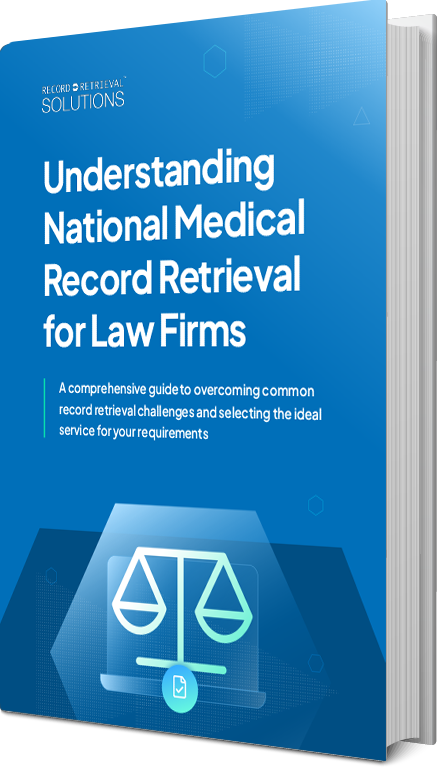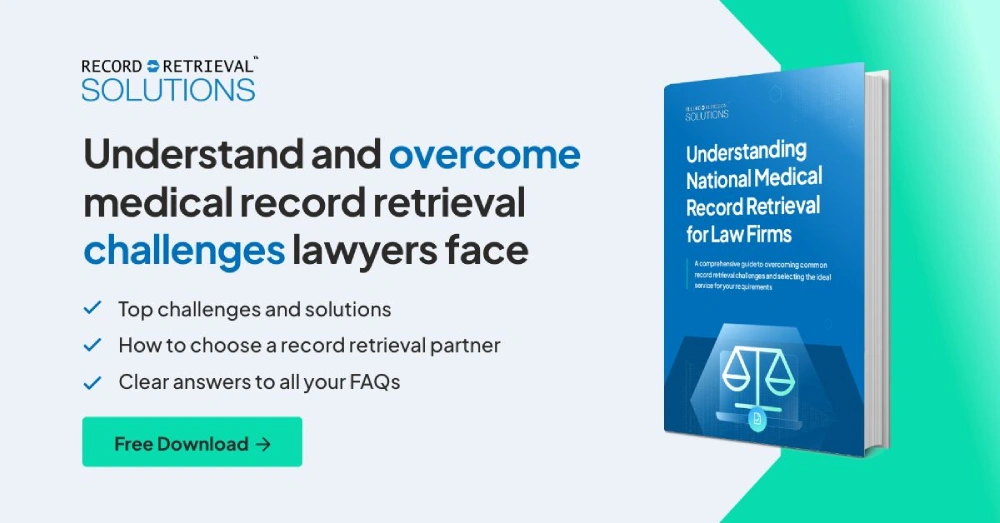The healthcare industry is increasingly turning to cloud computing for managing medical records. This shift is transforming how healthcare providers store, access, and utilize patient data. In this comprehensive guide, we’ll explore why cloud computing in medical record management is becoming essential for healthcare professionals.
Understanding Cloud Computing in Healthcare
What is Cloud Computing in Healthcare?
Cloud computing in healthcare represents a transformative shift in how medical data is stored, managed, and processed. By leveraging internet-hosted remote servers, cloud computing provides an alternative to the traditional reliance on local servers or personal computers for health data management. This innovation offers several key benefits and capabilities that are reshaping the healthcare industry:
- Data Accessibility and Mobility: One of the most significant advantages of cloud computing in healthcare is the ability to access health data from anywhere, at any time. This mobility is crucial for healthcare providers who need real-time access to patient information, whether they are in a hospital, a clinic, or providing telemedicine services. This flexibility enhances the efficiency and responsiveness of patient care.
- Scalability and Flexibility: Cloud computing allows healthcare organizations to scale their data storage needs up or down based on demand. This scalability means that hospitals, clinics, and other healthcare facilities can manage large volumes of health data more efficiently, without the need for significant physical infrastructure upgrades.
- Cost-Effectiveness: Maintaining on-premise servers for healthcare data storage is often expensive, requiring significant capital investment, ongoing maintenance, and upgrades. Cloud computing reduces these costs by eliminating the need for extensive on-site hardware and the associated maintenance expenses.
- Enhanced Collaboration: Cloud computing facilitates easier sharing and collaboration on patient data among different healthcare providers. This enhanced collaboration can lead to more coordinated and comprehensive patient care, as well as more efficient medical research and analysis.
- Data Backup and Recovery: The cloud provides robust options for data backup and recovery. In the event of local data loss due to disasters, system failures, or other emergencies, healthcare providers can quickly retrieve vital data from the cloud, ensuring continuity of care and operations.
- Improved Security and Compliance: While security concerns are paramount in healthcare, cloud computing can offer advanced security features, such as data encryption and secure access controls. Moreover, reputable cloud service providers ensure compliance with healthcare regulations such as HIPAA (Health Insurance Portability and Accountability Act) in the U.S., which governs the privacy and security of patient health information.
- Data Analytics and Insights: Cloud computing enables the aggregation and analysis of large datasets, leading to better insights into patient health trends, treatment outcomes, and operational efficiencies. This data-driven approach can help healthcare providers make more informed decisions and improve patient care quality.
In summary, cloud computing in healthcare introduces a more dynamic, scalable, and cost-effective approach to data management, drastically improving access, collaboration, and the overall quality of patient care. As technology continues to evolve, cloud computing is likely to become increasingly integral to the healthcare sector.
The Importance of Medical Records in Cloud Computing
Cloud computing has revolutionized the way medical records are managed, making them a central component of modern healthcare systems. The importance of medical records in cloud computing cannot be overstated, as they play a crucial role in numerous aspects of healthcare delivery and management.
- Centralized Data Management: Cloud computing allows for the centralized management of medical records, which is crucial for consolidating patient information from various sources. This unified approach ensures that healthcare providers have comprehensive and up-to-date patient histories, lab results, and treatment plans at their fingertips, which is essential for accurate diagnosis and effective treatment planning.
- Enhanced Accessibility and Collaboration: One of the key benefits of storing medical records in the cloud is the enhanced accessibility it provides. Healthcare professionals can access patient data from anywhere, at any time, using any internet-enabled device. This is particularly beneficial for multi-disciplinary teams that require coordinated efforts in patient care, as it allows for seamless collaboration and information sharing among physicians, specialists, and other healthcare providers.
- Real-Time Updates and Information Sharing: Cloud computing enables real-time updates to patient records. When a healthcare provider makes a change or adds new information to a patient’s record, it’s immediately available to all authorized users. This instantaneous updating eliminates the lag associated with traditional paper records or localized digital storage, ensuring that everyone involved in a patient’s care has the most current information.
- Improved Patient Outcomes: The use of cloud computing in managing medical records directly contributes to improved patient outcomes. With more accurate and complete patient information readily available, healthcare providers can make better-informed decisions, leading to more effective treatment plans and reduced chances of medical errors.
- Data Analytics and Personalized Medicine: Storing medical records in the cloud facilitates advanced data analytics. By analyzing large volumes of data, healthcare providers can identify trends, improve treatment protocols, and even predict health risks. This data-driven approach paves the way for personalized medicine, where treatments can be tailored to individual patients based on their unique health data.
- Security and Compliance: While the shift to cloud computing raises concerns about data security, most cloud service providers implement robust security measures, including data encryption, secure user authentication, and regular security audits. Furthermore, compliance with healthcare regulations, such as HIPAA in the United States, ensures that patient data is handled in a manner that protects their privacy and confidentiality.
- Cost-Effectiveness and Scalability: Cloud computing offers a cost-effective solution for medical record management. It eliminates the need for healthcare facilities to invest in and maintain expensive IT infrastructure. The scalable nature of cloud services also means that healthcare providers can adjust their data storage needs as required, without incurring significant additional costs.
- Disaster Recovery and Data Backup: Medical records stored in the cloud are safeguarded against local disasters such as fires, floods, or hardware failures. Cloud providers typically offer robust data backup and disaster recovery services, ensuring that critical patient data can be quickly restored and accessed even in the event of a catastrophe.
In conclusion, the integration of medical records in cloud computing plays a pivotal role in modernizing healthcare systems, enhancing the efficiency and quality of patient care, and contributing to the overall resilience and sustainability of healthcare services.
Access and Scalability
One of the key advantages of cloud computing is the ability to access patient records from anywhere, at any time. It also offers scalable storage solutions, accommodating the fluctuating demands of patient data management.
Addressing Security Concerns of Cloud-Based Medical Record Management
Addressing security concerns in cloud-based medical records is a critical issue in the healthcare industry. As more healthcare providers move towards cloud computing for storing and managing patient data, ensuring the confidentiality, integrity, and availability of this information becomes paramount. Here are several key aspects to consider:
1. Data Encryption
- At Rest: Encrypting data stored in the cloud to prevent unauthorized access.
- In Transit: Ensuring data is encrypted during transmission over networks.
- End-to-End Encryption: Implementing strong encryption protocols for data from the point of creation to its destination.
2. Access Control
- Authentication Mechanisms: Using robust authentication methods like multi-factor authentication (MFA).
- Role-Based Access Control (RBAC): Ensuring users have access only to the data necessary for their role.
- Audit Trails: Keeping detailed logs of who accessed what data and when.
3. Compliance with Regulations
- HIPAA in the US: Adhering to Health Insurance Portability and Accountability Act standards.
- GDPR in Europe: Complying with General Data Protection Regulation for European patients.
- Local Regulations: Following specific healthcare data protection laws in different countries.
4. Data Integrity
- Regular Backups: Ensuring data is regularly backed up to prevent loss.
- Checksums and Hashes: Using these to verify that data has not been tampered with.
- Version Control: Keeping track of different versions of medical records.
5. Disaster Recovery and Business Continuity
- Disaster Recovery Plans: Having robust plans in place for data recovery in case of a cyberattack or natural disaster.
- Redundancy: Storing data in multiple locations to prevent loss due to hardware failure.
6. Regular Security Audits and Penetration Testing
- Vulnerability Assessments: Regularly scanning for vulnerabilities in the cloud infrastructure.
- Penetration Testing: Simulating cyberattacks to test the resilience of security measures.
- Third-Party Audits: Engaging external experts to audit the security of the cloud services.
7. Employee Training and Awareness
- Security Training: Regular training for staff on the latest cybersecurity threats and best practices.
- Phishing Awareness: Educating employees about the dangers of phishing attacks and how to recognize them.
8. Data Segregation
- Multi-Tenancy Concerns: Ensuring that data is segregated and isolated from other tenants in the cloud.
- Encryption Keys Management: Proper management of encryption keys to prevent unauthorized data access.
9. Monitoring and Incident Response
- Real-Time Monitoring: Implementing tools for real-time monitoring of suspicious activities.
- Incident Response Plan: Having a clear plan for responding to security breaches.
10. Vendor Management
- Choosing Reputable Vendors: Selecting cloud service providers with a strong track record in security.
- Service Level Agreements (SLAs): Ensuring SLAs include provisions for security and data protection.
11. Patient Consent and Transparency
- Informed Consent: Ensuring patients are aware of how their data is stored and used.
- Transparency: Being transparent about the security measures in place to protect patient data.
12. Emerging Technologies and Threats
- Staying Informed: Keeping up-to-date with emerging cybersecurity technologies and threats.
- Adaptive Security Strategies: Continuously evolving security strategies to counter new threats.
By addressing these areas, healthcare providers can significantly enhance the security of cloud-based medical records, ensuring patient trust and compliance with legal and ethical standards.
Navigating Data Sovereignty in Cloud Computing
Navigating data sovereignty in cloud computing is a complex challenge that involves understanding and complying with the laws and regulations governing the storage and processing of data within specific geographical boundaries. As cloud services often involve data centers located in various countries, ensuring compliance with data sovereignty requirements is crucial for organizations, especially those handling sensitive or regulated data. Here are key aspects to consider:
1. Understanding Data Sovereignty Laws
- Local Laws: Familiarizing oneself with the laws of the country where the data is stored.
- International Regulations: Being aware of international data protection laws, such as the GDPR in Europe.
- Sector-Specific Regulations: Some industries, like healthcare or finance, have additional regulatory requirements.
2. Data Localization Requirements
- Storing Data Locally: Some countries require certain types of data to be stored within their borders.
- Impact on Cloud Strategy: This may influence the choice of cloud service providers (CSPs) and data center locations.
3. Cross-Border Data Transfer
- Transfer Mechanisms: Understanding legal mechanisms for data transfer across borders, like Standard Contractual Clauses (SCCs) under GDPR.
- Privacy Shield Frameworks: For instance, the EU-US Privacy Shield (invalidated but relevant in context) and its potential replacements.
4. Choosing the Right Cloud Service Provider
- Compliance with Sovereignty Laws: Selecting CSPs that adhere to local data sovereignty laws.
- Transparency: Providers should be transparent about where data is stored and processed.
5. Data Governance Policies
- Developing Robust Policies: Creating policies that address data sovereignty concerns.
- Data Classification: Classifying data based on sensitivity and regulatory requirements.
6. Contractual and Legal Considerations
- Service Level Agreements (SLAs): Ensuring SLAs align with data sovereignty requirements.
- Legal Counsel: Consulting with legal experts to navigate complex regulatory landscapes.
7. Risk Management
- Assessing Risks: Evaluating the risks associated with storing data in different locations.
- Mitigation Strategies: Developing strategies to mitigate potential legal and compliance risks.
8. Technology Solutions
- Encryption: Encrypting data to protect it during transfer and when stored.
- Data Masking and Tokenization: Techniques to anonymize sensitive data.
9. Audit and Compliance
- Regular Audits: Conducting audits to ensure ongoing compliance with data sovereignty laws.
- Certifications and Standards: Adhering to industry standards and obtaining relevant certifications.
10. Employee Training and Awareness
- Regular Training: Educating staff about data sovereignty issues and compliance.
- Awareness Programs: Implementing programs to keep data sovereignty top of mind.
11. Emerging Technologies and Trends
- Cloud Sovereignty Solutions: Exploring emerging solutions like sovereign cloud models.
- Staying Informed: Keeping up with changes in technology and regulations.
12. Negotiating with Providers
- Custom Solutions: Working with CSPs to create solutions that meet specific sovereignty needs.
- Flexibility and Scalability: Ensuring solutions are flexible and scalable to adapt to changing laws.
13. Data Sovereignty in Multi-Cloud Environments
- Managing Multiple Providers: Understanding how data sovereignty is handled across different cloud environments.
- Integration Challenges: Addressing the complexities of integrating services from multiple CSPs while maintaining compliance.
Navigating data sovereignty in cloud computing requires a strategic approach that balances compliance with operational efficiency. Organizations must stay informed and agile to adapt to the evolving legal landscape while leveraging technology and expert guidance to ensure compliance.
FAQs
Common Questions Answered
- What is cloud computing used for in healthcare?
- Cloud computing in healthcare is used for storing, managing, and processing health data remotely, enhancing accessibility and security.
- What are cloud-based electronic health records?
- These are patient records stored and managed on cloud servers, allowing for easier access and management.
- Which type of cloud is used by hospitals?
- Hospitals typically use public, private, or hybrid clouds, depending on their specific needs and security requirements.
- What are the benefits of using the cloud for electronic health record systems?
- Benefits include improved accessibility, enhanced security, cost efficiency, and better disaster recovery options.
- Is using the cloud safe for healthcare?
- Yes, with robust security measures and compliance with legal standards, cloud computing can be a safe option for healthcare data management.







